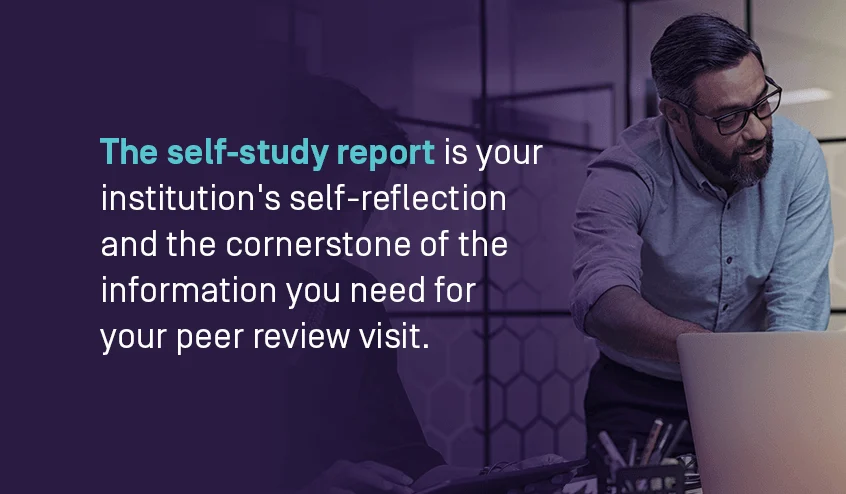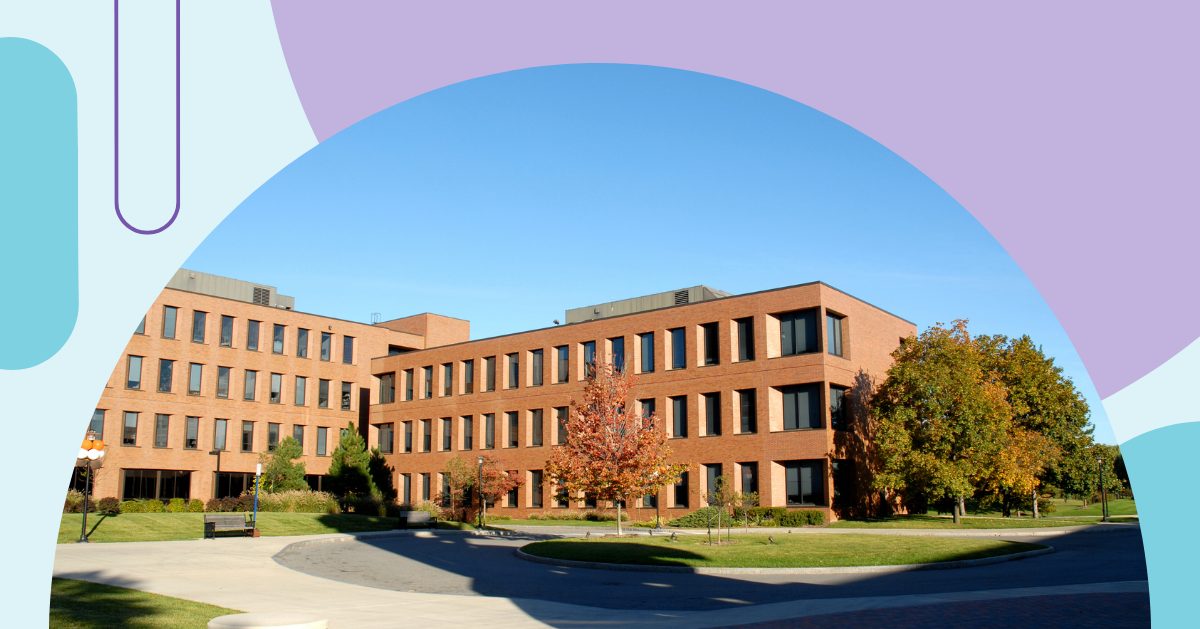
Community colleges are the backbone of higher education in many ways. As student demographics and political landscapes change, they have maintained a degree of success despite many challenges. After a sharp decline between 2020 and 2023, community college enrollment is rising, as more students realize the many benefits they bring to the community. In making education accessible, your community college significantly impacts academics, the workforce, and society.
As new changes are on the horizon in the coming year, staying current with emerging trends is essential. Below, we’ve outlined some of the most common trends in community colleges.
Community college trends to watch in 2025
Since its inception, community colleges have played a pivotal role in accessible education and upskilling the workforce. More than ever, college graduation increases job satisfaction and career stability. Despite the many challenges community colleges have faced in the past decade, they remain focused on student success, enabling traditional and nontraditional students to improve their lives. If you’re responsible for the institutional effectiveness of a community college, understanding 2025 trends can position you for a highly successful year.
Some of the top community college trends in 2025 include:
Data and technology trends
Artificial intelligence (AI) is there to stay. It’s one of the most common industry trends, and postsecondary education is no exception. Embracing AI is essential for community colleges. In addition to leveraging its power to streamline administrative processes and enhance teaching, you must also equip students with the skills to use AI tools in their careers.
A massive 42 percent of employers are seeking people with AI development qualifications. We can expect more community colleges to meet this demand with specialized courses. Businesses across industries are prioritizing candidates for jobs who can use AI to innovate and solve problems. Incorporating AI into your curricula and offering hands-on training gives students a competitive edge in an evolving job market.
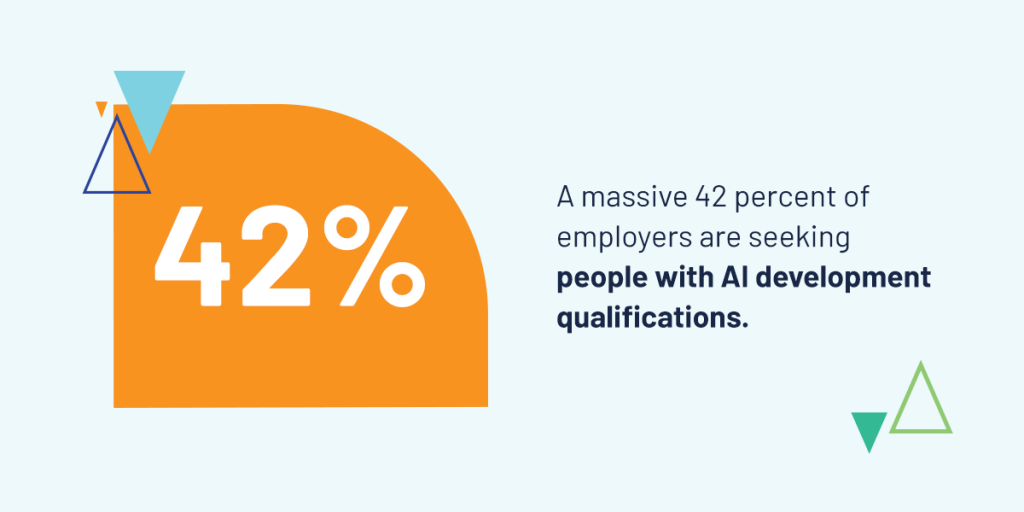
Preparing students for the workforce is only part of AI capabilities. You can also use them to build efficiency and enhance the college experience. Some of the principal AI and data trends for community colleges this year include:
- Adding AI for workforce programs: Each college’s efforts to create and integrate new AI courses into existing curricula have drastically shifted.
- Prioritizing digital literacy: Many community colleges are changing their offerings to match student skill sets with the digital economy’s demands. In addition to AI, students sharpen their technical skills by learning to solve challenges in industries like health care, finance, and life sciences.
- Personalizing learning environments: One of the main benefits of AI and data analytics is that they allow you to create customized learning for your students. You can use data on learning styles, pace, and preferences to predict where students may struggle and offer personalized resources to intervene.
- Automating administrative tasks: AI can transform your administrative processes in several ways. You can use chatbots and virtual assistants to bring support resources to students, meeting them where they are. Scheduling classes, allocating rooms, and optimizing resources are ideal use cases for today’s technology.
- Streamlining admissions and data management: AI can sort, categorize, and analyze admissions. It also updates student records in real time and flags inconsistencies, giving you an up-to-date snapshot of student success.
- Using predictive analytics for student engagement: Predictive modeling is at the heart of data analytics. Predictive models will use your past data to identify patterns, including declined student engagement. You can identify patterns like reduced participation, attendance, or a sudden change in grades and intervene in time.
Whether on-premises or in the cloud, your data can make or break any AI project. Your AI tools will provide good information if you pay attention to your data. If not, you may set off in the wrong direction. Staying ahead of these trends means prioritizing data everywhere on your campus. Have a clear strategy for collecting and using data and auditing it for accuracy.
Enrollment trends
Data on college enrollment at the end of 2024 noted enrollment has increased. However, some schools drive the rest, with vocational schools and high-value college majors leading the pack. The impact of the COVID-19 pandemic on community college enrollment has continued to fluctuate until recently. The recent enrollment growth speaks to a reinvigorated community college environment.
Some of the most impactful enrollment trends in community colleges include:
- Accelerating dual enrollment: Community colleges still lead college enrollment. In 2023, high school dual enrollments represented 21 percent of total enrollments for community colleges. The U.S. Department of Education collects new dual enrollment data, offering insights into college-level student participation. With a clear picture of how dual enrollment is evolving, community colleges can create more effective annual campaigns.
- Creating student pathways: Another exciting trend is creating pathways that liberate dual enrollment to future career opportunities. Community colleges that map their curricula to support students from high school to the workforce are becoming increasingly popular. They will likely gain traction in a job market opening up to those without degrees from four-year institutions.
- Focusing on nontraditional enrollment: Around 43 percent of full-time community college students are employed full-time. The evolving job market, economic changes, and employers needing new skills drive these numbers even higher. In 2025, many community colleges will provide additional flexibility and support to this student demographic.
- Expanding vocational schools: Vocational focus is one of the main drivers of growth in community colleges. More students want higher education to get them straight into the labor force and feel they can get it at community college. In line with this trend, enrollment in high-value majors, such as health, engineering, and computer science, is also increasing. Students are mindful of the cost of their education, and many want high-paying jobs in return.
The future of enrollment is bright for community colleges. However, you must focus on sustaining and nurturing this growth. Allocating resources to dual enrollment expansion is a priority for many, as is forming partnerships with school districts for data sharing and early admissions strategies. Effective marketing and recruitment strategies remain essential to improve enrollment and retention. Focus on personalized marketing campaigns and leverage data to make the best decisions about outreach and engagement.
Workforce trends
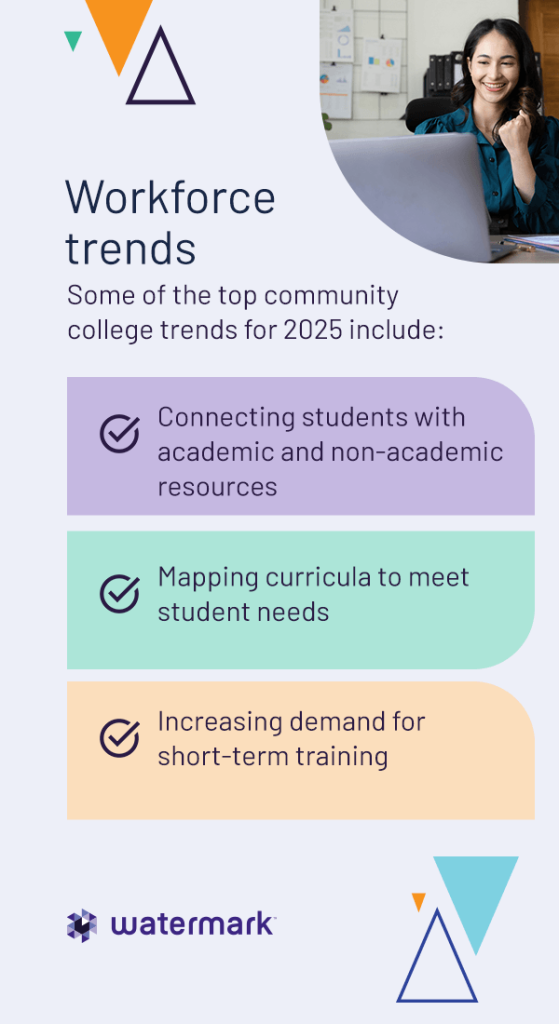
In 2025, the growing recognition of the need for inclusive, flexible, and effective student pathways persists. Community colleges will continue to play a role in identifying and scaling these pathways to support students from diverse backgrounds. Community college students often have jobs, families, and other responsibilities. They’re also questioning the value of attending college, and this shift in mindset has forced community colleges to reevaluate their definitions of student success.
Instead of defining success by obtaining a degree or vocational credential, community colleges focus on personalized learning experiences. They are redirecting their resources to support students in college and on the pathway to a good job. By aligning their curricula with workplace demands, community colleges can better meet student and societal needs.
Some of the top community college trends for 2025 include:
- Connecting students with academic and non-academic resources: Some community colleges are expanding the roles of their advisors to better prepare students for the workforce. More students will gain access to embedded work-based learning experiences and other interventions to help them complete courses.
- Mapping curricula to meet student needs: As workforce demands change rapidly, another 2025 trend involves community colleges evolving and innovating their programs. They’re also focusing on clarity in the paths they offer, from education to good jobs. All community college courses that lead to substantial employment and transfer outcomes will take preference, while those that don’t will receive limited resources or be eliminated.
- Increasing demand for short-term training: Many employed students looking to reskill or upskill seek short-term training opportunities linked to their specific industry. Community colleges will provide more of these opportunities, including apprenticeships, micro-credentials, and certifications. This training becomes a link to higher-quality jobs, earnings, and potential for advancement.
Measuring student success from enrollment to career connects every student’s education with their real-world impact. It demonstrates how well your college prepares students for the workforce. Collaborate with your stakeholders on curriculum development and delivery to keep up with these trends. Ensure that individual career preparation activities become part of a coordinated experience that benefits students, employers, and society.
Financial trends
Although community colleges have rebounded from the losses associated with COVID-19, their growth is slow and limited. In 2023-2025, Free Application for Federal Student Aid (FAFSA) rollouts faced delays and other challenges, which left students and their families uncertain. Community colleges experienced compressed financial aid timelines and strained resources, especially those serving underrepresented populations. The FAFSA completion rate was down 11.6 percent in 2024.
While the process is expected to be smoother this year, some students and their families may still distrust it. The delay has also shortened the time frame that financial aid officers have to assist students. Community college students, in particular, often face challenging circumstances that can further complicate the process. While some believe FAFSA challenges will be less impactful, community colleges still face financial difficulties.
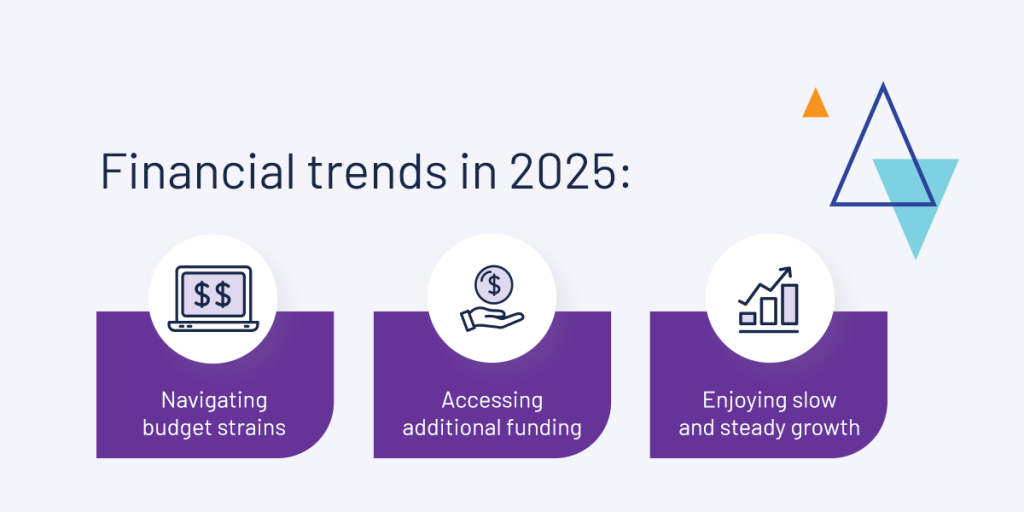
Some financial trends for community colleges in 2025 include:
- Navigating budget strains: Inflation is easing for many community colleges, but costs remain high. Tuition price competition has increased the pressure, especially for smaller institutions. In addition, some things are challenging to prepare for, including policy changes.
- Accessing additional funding: Like most community colleges, you rely on local and state funding. Many community colleges receive less funding than public, four-year institutions, which can impact their effectiveness. In 2025, many community colleges will work to access additional funding to boost student persistence and create high-quality courses.
- Enjoying slow and steady growth: Despite pressures like inflation and the loss of federal relief funds, community colleges have fared well in recent years. Pending unforeseen events, most community colleges will maintain their margins in 2025 and grow consistently thereafter.
Trends in the Education Landscape
Recent political shifts have impacted higher education, and community colleges may feel it, too. The incoming administration is discussing some significant changes, which could have far-reaching implications. Some of the proposed policy shifts include:
- The potential dismantling of the Department of Education (DoE): While eliminating the DoE is highly unlikely, it would decentralize accreditation and disrupt financial aid delivery for low-income students. This potential change could lead to increased disparities in access to education, as institutions struggle to navigate a fragmented system.
- The End Woke Higher Education Act: If the End Woke Higher Education Act passes, many education institutions will have to rethink diversity, equity, and inclusion (DEI) initiatives. Community colleges may face penalties for administering their DEI programs and lose funding. Reduced funding could limit the abilities of community colleges to attract and retain diverse student populations, ultimately affecting their enrollment numbers and campus diversity.
- The changing federal mandates: The incoming administration plans to reverse many policies from its predecessor, including student loan forgiveness and protection for transgender students under Title IX. These changes make it challenging for community colleges to remain compliant and offer students the support they need. Additionally, the reversal of student loan forgiveness could lead to increased student debt loads, discouraging enrollment.
This semi-perpetual state of uncertainty will challenge community colleges in 2025. If the changes go through, they will likely impact campus culture, putting pressure on community colleges to adapt quickly to the new regulatory landscape. Maintaining enrollment and retention depends on the access, enrollment, and success of students from various backgrounds.
Although the trajectory of these trends remains uncertain, you can consider what they would mean for your campus if they do happen. Have a backup plan for your operations and the resources you will make available to students. Moreover, engage with your community and stakeholders to create a proactive approach to these changes, ensuring that the needs of your diverse student population are met effectively.
Stay on top of evolving community college trends with Watermark
In a rapidly changing education landscape, you can look forward to a mixed bag of challenges, opportunities, and growth for your community college. One thing is clear — preparing students for the workplace and providing personalized learning are high on the agenda. You need innovative technology and processes that enhance the student experience to stand out.
With Watermark’s Educational Impact Suite, you can drive critical action in line with current trends. We’ve created a centralized system to collect, analyze, and synthesize your data so you can use it to drive continuous improvement and student success. Let us help you maximize your impact. Request a demo with our team today!























































































































































































































































